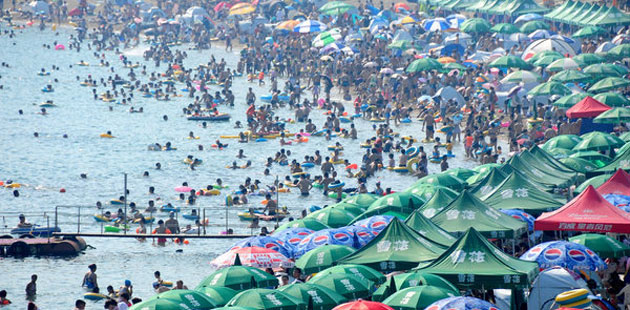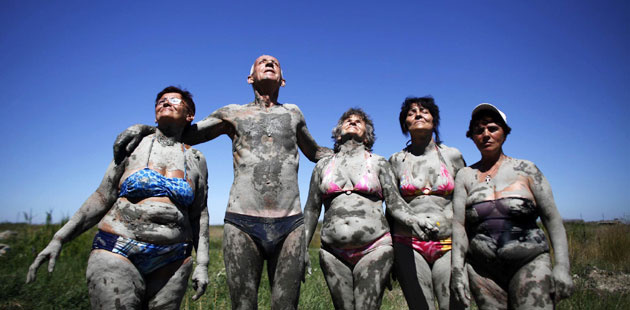Japan nuke plant radiation leak exceeds Hiroshima
Updated: 2011-08-27 08:51
(Agencies)
|
|||||||||||
TOKYO - The amount of radioactive cesium that has leaked from a tsunami-hit nuclear plant is about equal to 168 of the atomic bombs dropped on Hiroshima at the end of World War II, Japan's nuclear agency said Friday.
The Nuclear and Industrial Safety Agency supplied the estimate at a parliamentary panel's request, but it noted a simple comparison between an instantaneous bomb blast and long-term accidental leak is impossible and the results could be "irrelevant."
The report estimated for each of the 16 isotopes released from "Little Boy" and 31 of those detected at the Fukushima plant but didn't provide the total. NISA has said the radiation leaked from Fukushima was about one-sixth of what the Chernobyl disaster released in 1986.
The March 11 earthquake and tsunami caused three reactor cores at Fukushima Dai-ichi nuclear power plant to melt. Several blasts and fires also sent massive radiation into the environment.
The report said the damaged plant has released 15,000 tera becquerels of cesium-137, which lingers for decades and could cause cancer, compared with the 89 tera becquerels released by the U.S. uranium bomb.
The bomb "Little Boy" dropped on Aug. 6, 1945, destroyed most of the city and killed as many as 140,000 people. A second atomic bombing three days later in Nagasaki killed tens of thousands more, prompting Japan to surrender and ending WWII.
The Hiroshima bomb claimed most of its victims in the intense heatwave and neutron rays from a midair nuclear explosion and the highly radioactive fallout. No one has died from radiation leaks from the Fukushima plant, where explosion from hydrogen buildup damaged reactor buildings but did not involve reactor cores.
The report estimated that Iodine-131, another isotope that accumulates in thyroid gland, and Stronthium-90, which has a 28-year half-life and could accumulate in bones, leaked from the plant in amounts about equal to 2.5 of the Hiroshima bombs.
A separate government report released Thursday said that 22 percent of Cesium-137 and 13 percent of Iodine-131 released from the plant during the crisis have fallen on the ground, with the remaining either fell into the ocean or outside the area of simulation.
The National Institute for Environmental Studies said its simulation of aerial flow, diffusion and deposition of the two isotopes released from the tsunami-hit plant showed their impact reached most of Japan's eastern half, ranging from Iwate in the north to Tokyo and central prefecture (state) of Shizuoka. Both Iwate and Shizuoka are more than 180 miles (300 kilometers) away from the plant.
The study also showed that Iodine-131 tended to spread radially and Cesium-137 tended to create "hot spots."
Some 100,000 people evacuated their homes due to radiation threats from the Fukushima plant.
On Friday, about 30 residents from the immediate neighborhood of the plant were allowed to briefly return home to get clothes and other necessities they left early in the crisis. But officials have said their area may stay off-limits for years.
Plant operator Tokyo Electric Power Co. and the government aim to bring the reactors to stable cold shutdowns by early January. The government is working to decontaminate areas outside the 12-mile (20-kilometer) restricted zone where access may be relaxed in coming weeks.
Hot Topics
The European Central Bank (ECB) held a conference call late on Sunday ahead of the market opening, pledging the ECB will step in to buy eurozone bonds with efforts to forestall the euro zone's debt crisis from spreading.
Editor's Picks

|

|

|

|

|

|







